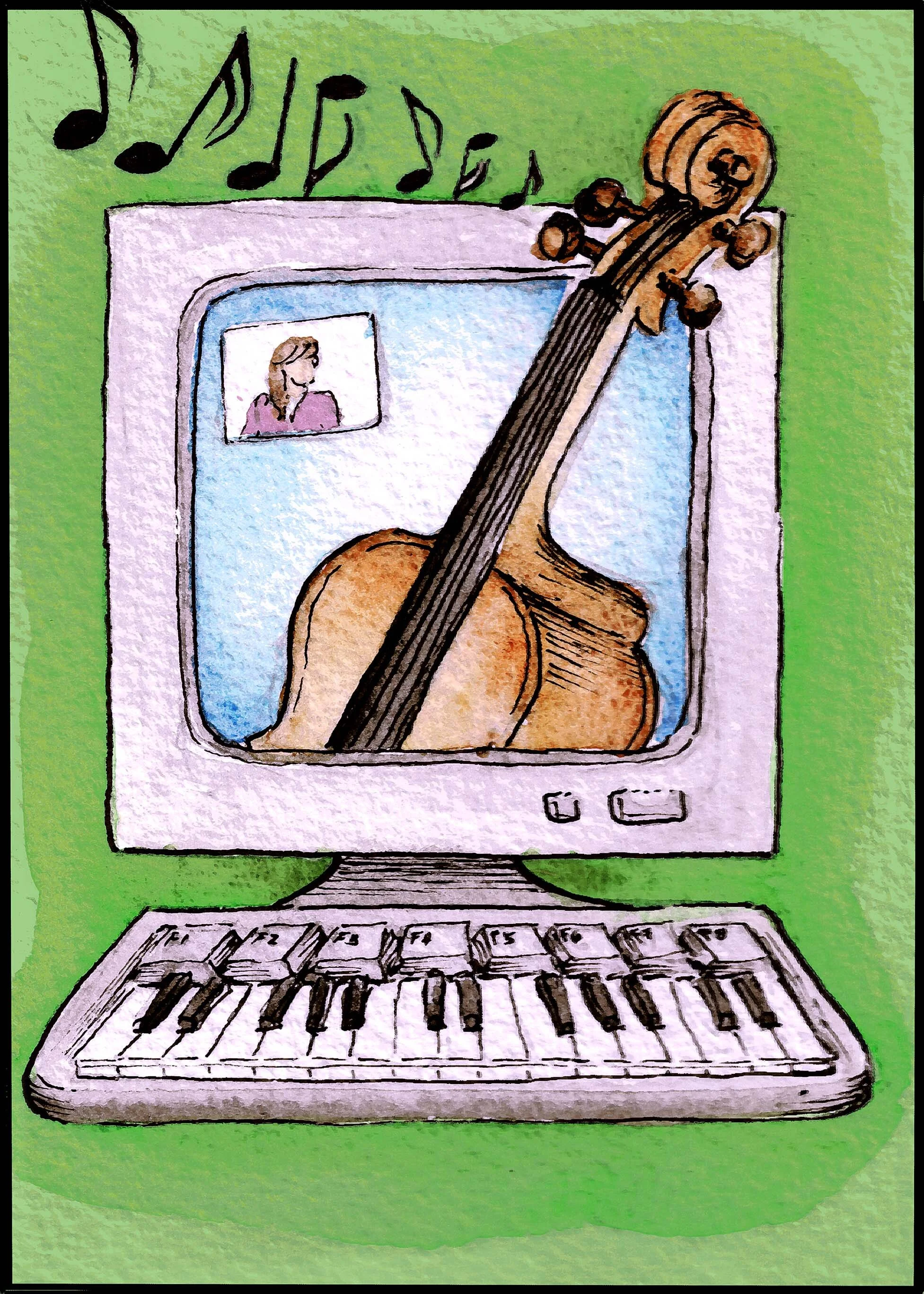Top Tips for Starting Online Music Lessons - Things I've Learned
“We are living in unprecedented times” and while there may be now some light at the end of the tunnel regarding lockdown, I suspect the COVID-19 pandemic will continue having an effect on our day to day lives for some time to come. Doing our bit, maintaining physical distancing, minimising travel will all help towards the greater good of our community, in not undoing our efforts so far.
That said, keeping some notion of routine, work and other activities, going during lockdown is very important, at the same time it can be challenging.
For me the first couple of weeks was ok, I'm normally out and about so much it was a welcome reprieve to stay at home. But life must go on somehow, and I have been lucky enough to be able to continue, to some extent, my teaching practice remotely.
I offered those who could and wanted to, lessons via Zoom. Having briefly dipped into online lessons in the past I found certain functions in Zoom are more favourable than Skype for example.
But it has still been quite a big learning curve for me and my students, and continues to be after the initial novelty has worn off. I have found there are a few things to really consider in order to make the most out of online music lessons.
#1 BE PREPARED
I cannot stress this enough, and not just regarding content but also the setup.
Find a place with as few distractions as possible.
Making this your lesson location helps with the routine, like "going" to a lesson.Position yourself
Somewhere that is well lit (facing the light, not in front of it) and putting yourself in the frame, not too far, keeping all the important things in view, fingers and bow etc.Set up early
From time to time there are inevitably technical issues that come up and if you find them out in advance you might just have a chance to solve them before the start of the lesson.Zoom has some easily customisable settings that improve performance during a music lesson:
Turn off the video enhancements to allow more bandwidth for the sound, for example any HD option or 'Touch up my Appearance', these can be un-checked in Video Settings, or Meeting Settings if using the mobile app.
Also important to 'Enable Original Sound'. This can be found under Audio Settings -> Advanced (or again directly in Meeting Settings on the app). This disables the echo cancellation and audio enhancing features, which tend to filter out instrumental sounds, particularly the low register in the cello.
Have material prepared in advance
It goes without saying really that teachers need to have copies of the students existing material on hand to reference during lessons.New material
I myself have the majority of my teaching material in books, scanning it takes time, and this should be sent to the student in advance so that they can print it out or have it ready digitally.Sight reading
Have it scanned and ready to pull up in a shared screen (but checking first what device the student is using, this doesn't work so well on a mobile phone)
#2 GET CREATIVE
With an online platform we don't get the same connection we are used to in face to face lessons. So we do have to think of new or adapted ways to keep inspiring and motivating each other, as well as ways to problem solve remotely where often we would get more hands on.
Given how visuals and sound can be more impaired over a video conferencing platform we have to make more effort to be very clear and concise (and talk slower) when giving instruction.
Setting specific goals for the lesson is always a good thing to do, but in this format it feels like we can be more effective limiting it to maybe one global goal, rather than chopping it up too much.
We can then think of novel ways of getting this understood when physical demonstrations aren't going to be as effective.
From a students (or parents) perspective it is important to point out any problems that you have noticed so that these can be addressed - it's not always evident from the other end of the camera.
Finally, get inspired by trying new things, most of us like some sort of routine, but when that can't happen, things that we normally do can start to feel too hard, too isolated. So trying something completely new can be a way to find a new perspective, and gives us some motivation to get past this.
Creating fun new resources, an animated PowerPoint to play along with, little activities to do in between lessons, can be great for younger students.
Exploring new techniques.
Encourage students to recording themselves playing, as a quartet using an app like Acapella, or play along with a backing track or a drum loop.
Try your hand at improvisation or even writing a tune. Teach some tips and tricks how to get started.
The possibilities are many and students will feel challenged and empowered, and will come out of it much better off even if it differs from the regular program.
The main thing is staying connected - to music, to the instrument and to each other.
Then, once we get through the other side together, our love and appreciation of the arts will be stronger than ever.
Further Reading: The Strad: How to set yourself up as an online string teacher
If you found this post useful please remember to click the like button, drop me a comment below or subscribe to the feed.
Keep Well, Keep Safe and Be Kind.
